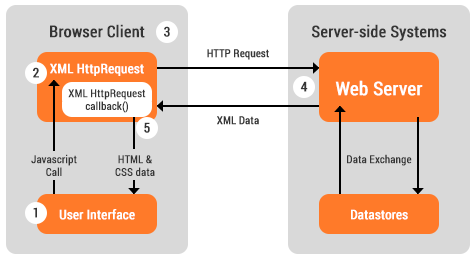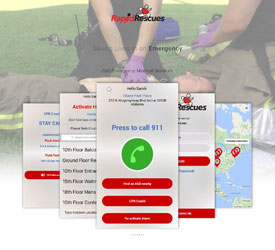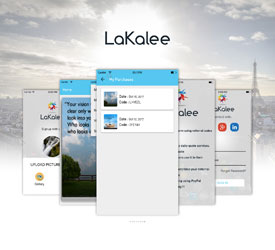AJAX & DOM
AJAX stands for Asynchronous JavaScript And XML. It is based on JavaScript and HTTP requests. Ajax is a catchy name for a type of programming made popular in 2005 by Google and other big web developers.
The Ajax technique accomplishes by using the following technologies:
Features of AJAX:- JavaScript that allows for interaction with the browser and responding to events
- The DOM for accessing and manipulating the structure of the HTML of the page
- XML, which represents the data passed between the server and client.
- An XMLHttpRequest object for asynchronously exchanging the XML data between the client and the server.
The following graphic shows how these technologies work together to update a piece of a page with new data from the server.

Features of AJAX:
- AJAX is not a new programming language, but a technique for creating better, faster, and more interactive web applications.
- With AJAX, your JavaScript can communicate directly with the server, using the JavaScript XMLHttpRequest object. With this object, your JavaScript can trade data with a web server, without reloading the page.
- AJAX uses asynchronous data transfer (HTTP requests) between the browser and the web server, allowing web pages to request small bits of information from the server instead of whole pages.
- The AJAX technique makes Internet applications smaller, faster and more user-friendly.
- AJAX is a browser technology independent of web server software.
- XHTML and CSS standards based presentation
- Interaction with the page through the DOM
- Data interchange with XML and XSLT
- Asynchronous data retrieval with XMLHttpRequest
- JavaScript to tie it all together
- Form driven interaction.
- Deep hierarchical tree navigation.
- Rapid user-to-user communication.
- Voting, Yes/No boxes, Ratings submissions.
- Filtering and involved data manipulation.
- Commonly entered text hints/autocompletion.
- Long Running Queries/Remote Calls
- Computationally Expensive Operations
- Server Savings
- Interactive Panning And Moving Over Data


 - Alan Harnacke
- Alan Harnacke







